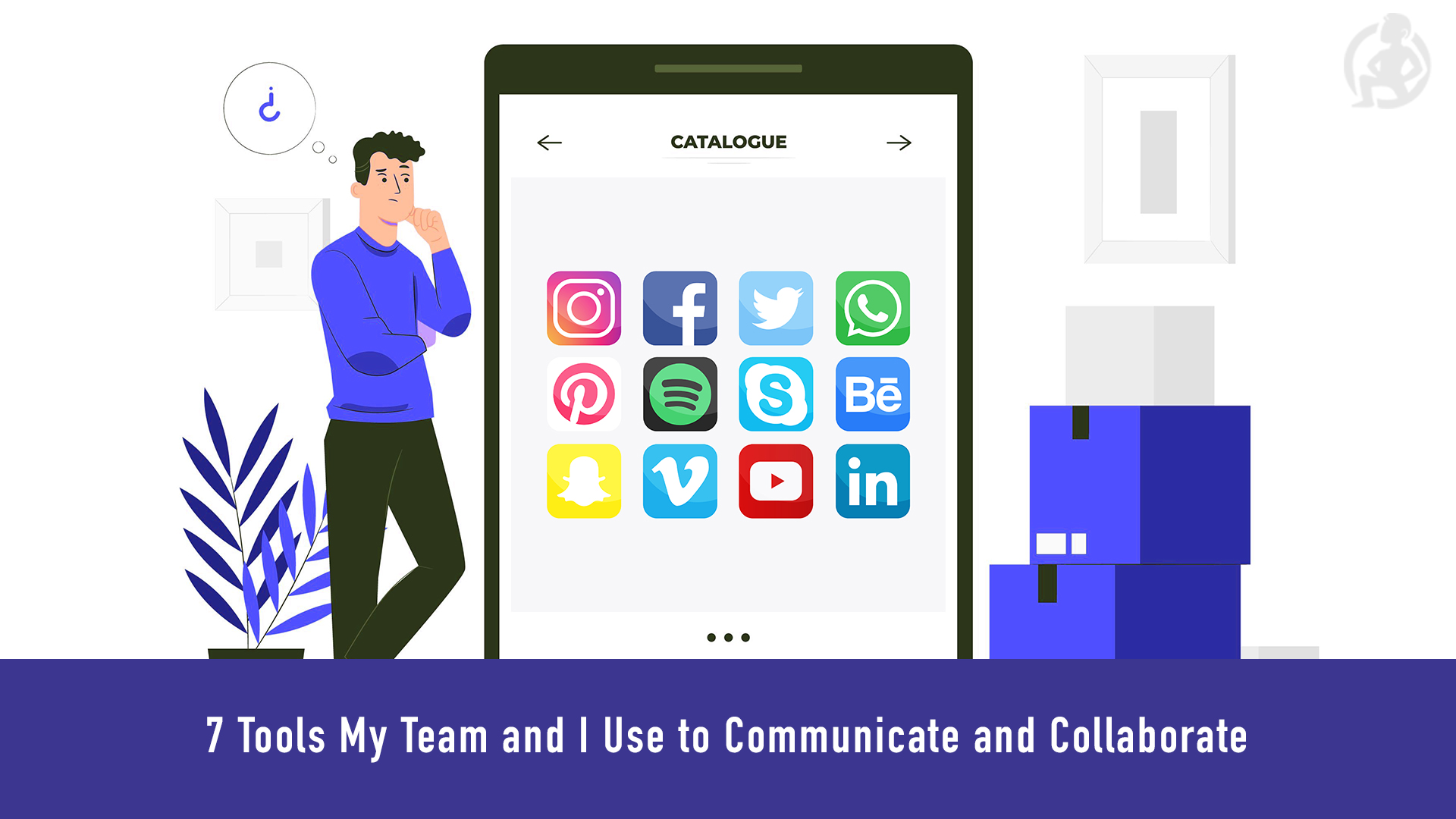Communication is the very key to progress. That said, frequent, effective communication with your virtual assistant isn’t just a good idea, it’s essential to your success and theirs.
Keep in mind that when you bring a VA onboard, they know little, if anything, about your business. While your VA will certainly have skills and experience for the tasks you hired them, there’s going to be a learning curve. This is where training and communication play such an integral role.
You should contact your VA daily. And when you do so, there are three questions I recommend asking:
- What did you do (today or yesterday)?
- What problems did you run into?
- What can I help you with?
This daily communication holds your VA accountable. It helps put your mind at ease, so you don’t have to worry about what they’re doing.
With all that, here are a few useful tools you can use to communicate with your VA:
Email

Simple, fast, and effective. These are the benefits of using email to communicate with your Filipino VA.
I email my VAs every day, so I teach and encourage others to do the same. Writing an email forces you to take the time in organizing your thoughts more thoroughly than any other means of communication.
Using email also gives your VAs the opportunity to sort out their thoughts before responding. With email, your VAs are more less likely to be caught off guard. Their answers are likely to be so much more insightful because they’ve had the opportunity to read and re-read your message and understand it.
Phone call

You read that right. Nothing beats a good old-fashioned phone call for a much needed communication. The downside to this: a phone call to the Philippines will cost you money. Depending on your provider and your plan, your call could cost as little as $0.02 a minute, or it could cost upwards of $1 per minute to call.
Please be conscious of the fact that there is a considerable time difference between the U.S. and the Philippines. Manila, Philippines, for example, is 13 hours ahead of the Eastern Time Zone in the U.S. So, if it’s noon in New York, it’s 1 in the morning the next day in the Philippines. If you need to speak with someone on the phone, plan to call them during working hours in the Philippines, meaning late at night or early in the morning in the U.S.
Upon hiring, make sure to ask for your VAs’ phone numbers. This way, you’ll be able to contact them in the event of an emergency at any time.
Phone calls might be the best communication method:
- if there’s a pressing issue, or
- if you need to convey information quickly, or
- ask an urgent question that requires immediate attention.
In other words, if you must communicate something to your VA that can’t wait even several minutes to an hour by an email response, a phone call is your best bet.
Instant Messaging and Video Chat: Skype / Slack / Facebook Messenger

These three platforms are very popular with VAs. Most of the people you’ll work with will be well versed in Skype. There’s also Facebook Messenger, Viber and WhatsApp.
If you want a more organized platform for your team, you can use Slack. That way you can create chat rooms and organize them by topic, groups, etc.
You can use any of these tools to send instant messages or video chat with your VAs when all of you are online. It allows you to communicate in real time, it’s the best thing you can get next to a phone call.
Online Meeting: Google Meet/Zoom/Microsoft Teams
Another way to communicate with your Filipino VAs is by using meeting tools like Google Meet, Zoom or Microsoft Teams. This is a great option if you need to do team-wide announcements or if you want your different VAs to work together on projects.
Collaboration Tools: Google Suite/Microsoft 365

Sometimes, you don’t need an entire email or instant message to say what you need to say. When my VAs are working together on a project, leaving small notes and comments for each other on Google Docs or Sheets also works.
Project Management Tools: Basecamp/Asana/Monday/Wrike

Online project management systems are a convenient and easy way to track the progress of various assignments you give team members (including deadlines, milestones, updates, budgeting, and other key factors in a project). They also help you stay in regular contact with your VA.
Most project management systems also allow you to send messages. You can even attach files, such as documents or videos, in the messages. When your Filipino VAs log on to their project management account, there will be notifications when messages are awaiting or when there are new assignments assigned to them.
The project management system I tell people to use is Basecamp. My Filipino VAs and I love it, and so will you. It’s simple, effective, and it will meet all your communication needs.
Screen Recording: Jing/TinyTake/Loom
Jing will make your life easier and will enhance the way you communicate with your Filipino VA. This is a screen capture and screen recording software. Plus, it’s free! Jing is fast, easy, and multi-purpose. It’s perfect for explaining to your VA exactly what you need them to do with a project or assignment. You can provide them with screenshots to give them examples of how to improve, enhance or change part of their work. Jing can easily be used in conjunction with any of these other media to get the most out of your communication to your Filipino VAs.
When my VAs need to send me screenshots or video captures, they use a similar tool called TinyTake. It’s free, lightweight, and easy to use.
Loom is also a good tool to record your screen, voice, and face to create an instantly shareable video in less time than it would take to type an email.
Whatever tools— or combination of tools—you decide to use to communicate with your VA, be sure you use them daily. Each has its place in your day-to-day interactions with your Filipino workers.
Communication is vital for understanding, building trust and for your VA to successfully progress and complete the work you give them. Effective communication will minimize confusion and frustration and will ultimately lead a fulfilling business relationship between you and your virtual assistant.

About John Jonas
John Jonas is a long-time outsourcing expert and the creator of OnlineJobs.ph.
Since 2005, John has taught hundreds of thousands of entrepreneurs how to profitably delegate to VAs in the Philippines (and get their lives back in the process).
With help from his own VAs based in the Philippines, John has created an outsourcing empire that allows him to work 17 hours/week and to spend most of his time with his wife and 5 kids.
Find John at JohnJonas.com and Facebook.
If you liked this you’ll probably also like reading

need part-time Job homebased.
Okay great
You can apply for any of the jobs posted here or on our website by signing up for an Onlinejobs.ph jobseeker account. It’s completely free and takes only minutes to apply. Having a jobseeker account also gives you access to thousands of new online jobs daily.
To start the registration process, just follow this link ===> http://www.onlinejobs.ph/register
Once you’ve completed your profile, you can start searching for the job that you want here ===>http://www.onlinejobs.ph/jobseekers/jobsearch/
You can find a wide variety of jobs there, from data entry, design, writing, programming, and more!
The job posts would contain all the information you need to apply for that position.
I would like thank you
I give my best
i will give my best for opportunity from this company
Hi Rafael,
Thank you for your comment. Our support team has emailed you regarding your ID Proof, this affects your ability to apply to job posts that might interest you. Kindly check your inbox